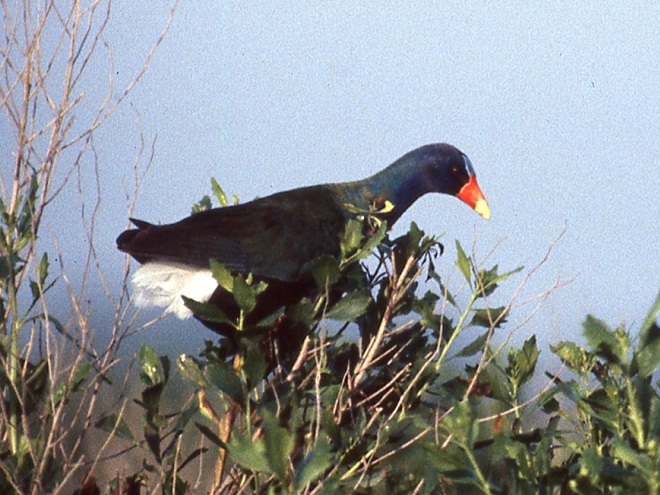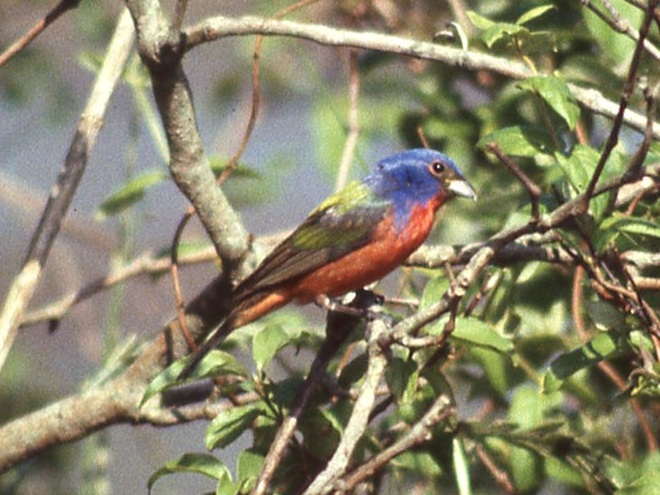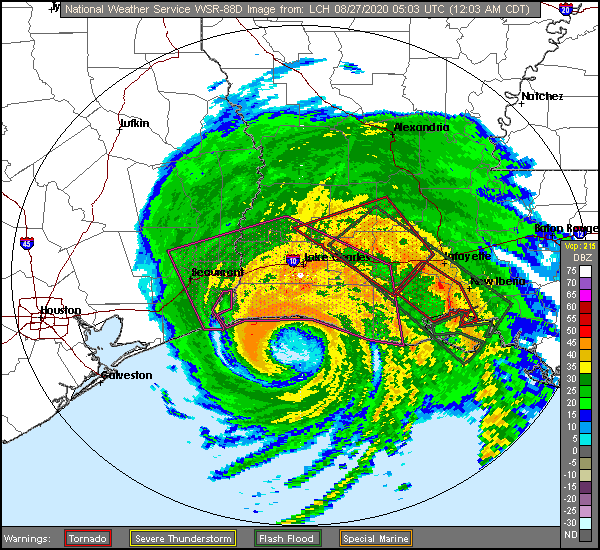Back in late May of 1983, four members of the Lancaster County Bird Club—Russ Markert, Harold Morrrin, Steve Santner, and your editor—embarked on an energetic trip to find, observe, and photograph birds in the Lower Rio Grande Valley of Texas. What follows is a daily account of that two-week-long expedition. Notes logged by Markert some four decades ago are quoted in italics. The images are scans of 35 mm color slide photographs taken along the way by your editor.
DAY THREE—May 23, 1983
For Russ, Harold, and Steve, this trip would target several bird species each individual had never observed at any prior time in their lives. Upon seeing a new bird, they could add it to their personal “life list”. They, like thousands of other “listers”, were dedicated to the goal of having a life list that included over 600 species seen in the American Birding Association (A.B.A.) area—North America north of Mexico. Harold had traveled throughout much of North America (and the world) and had an A.B.A. life list well in excess of 600 species, thus he had seen nearly all of the regularly occurring birds in the coverage area. His chance for seeing new species was limited to vagrants that might wander into North America or tropical birds that, over time, had extended their range north of Mexico into the United States. I don’t recall how many species Russ and Steve had seen, but I know each had very few opportunities for new finds east of the Rocky Mountains. For all three of these men, the Lower Rio Grande Valley presented a best bet to add multiple species to their lists. I had never been south of Cape Hatteras or west of Pennsylvania, so I had the opportunity to add dozens of species to a life list. Throughout the trip, Russ, Harold, and Steve enthusiastically helped me locate and see new species. As a result, I saw over 50 new birds to add to my list.
One of the functions of the American Birding Association was to decide which bird species an observer could add to the life list. The official A.B.A. list was revised regularly to include not only regularly occurring native species, but vagrants as well. One of the trickier determinations was the status of introduced species. Back in 1983, a birder could count a Ring-necked Pheasant seen in Pennsylvania on their A.B.A. life list because they were thought to be freely reproducing with a population sustainably established in the state. Today, they are considered an exotic release and are not countable under A.B.A. rules.
Enter the Black Francolin (Francolinus francolinus), a member of the pheasant family that back in 1983, was countable under A.B.A. rules. Native to India, the Black Francolin was introduced into southwest Louisiana in 1961 and was apparently reproducing and established. Russ had a tip that they were seen with some regularity in areas of farmland, marsh, and oil fields south of Vinton, Louisiana. It was one of this trip’s target species for his life list.
“Ready for Black Francolin. Up at 5:30 — After breakfast, we went to Gum Cove Road. No Francolins, but at the end of the blacktop road, we had 5 Purple Gallinules in the scope at one time. King Rails were plentiful. We found a dead male Painted Bunting. Later, we saw a very beautiful live one. Water everywhere. Flooded fields everywhere. The road was flooded for about 50 yards at one point. White Ibis were abundant.”


Other sightings of note along Gum Cove Road included: Northern Bobwhite, Common Nighthawk, Cattle Egret, Green Heron, American Bittern, Snowy Egret, Glossy Ibis, Black-necked Stilt (Himantopus mexicanus), Forster’s Tern, Black Tern, Yellow-billed Cuckoo, Eastern Kingbird, Purple Martin, Barn Swallow, Brown Thrasher, Loggerhead Shrike, Red-winged Blackbird, Brown-headed Cowbird, Eastern Meadowlark, Boat-tailed Grackle (Quiscalus major), and Great-tailed Grackle (Quiscalus mexicanus)—a very large and noisy blackbird I had never seen before.

The reader may be interested to know that today, the area between Vinton and the Gulf of Mexico has largely been surrendered to the forces of the hurricanes that strike the region with some regularity. Cameron Parish* is a sparsely populated buffer zone of marshes, abundant wildlife, and oil and gas wells. Its population of more than 9,000 in 1983 has plunged to less than 6,000 today. Hurricane Rita (2005) and Hurricane Ike (2008) precipitated the sharp decline. The latter hurricane had a 22-foot storm surge that flooded areas 60 miles inland of the coastline. Following these storms, the majority of severely damaged and destroyed homes were not rebuilt and residents in the most affected areas relocated. In 2020, Hurricane Laura made landfall at Cameron Parish with record-tying 150 mph winds and a storm surge that pushed flood waters inland to Lake Charles. Six weeks later, Hurricane Delta followed with 100 mph winds. For government agencies, the emergency response required by these two storms was minimized by the reduced presence of people and/or their personal property.
* A parish in Louisiana is similar to a county in other states.

“After a quick stop at the camp grounds, where I slipped and fell in the shower last nite, we headed south. Larry saw many birds en route.”
Russ took a bad fall on a slippery wet concrete floor and had bruises to show for it. It worried me; he was 71 years old at the time. But he was adamant about continuing on and did so with great vigor.
Just hours after a sojourn through the swampy parcels south of Vinton, we were cruising through the metropolis of Houston, Texas, then across a landscape with less cultivated cropland and more scrubland with grazing. Here and there, but primarily to the east of Houston, blankets of roadside wildflowers painted the landscape with eye-popping color. Lady Bird Johnson encouraged the plantings soon after she and Lyndon returned to Texas upon leaving life in the White House in 1969. The sight of those vivid blooms was so memorable and so beautiful. One couldn’t resist making nasty comparisons to the gobs of mowed grass and mangled trash along the highways back in Pennsylvania.
Birds along the way: Ruby-throated Hummingbird, Common Nighthawk, Black-bellied Whistling Duck, Yellow-crowned Night Heron, Great Blue, Heron, Great Egret, Black Vulture, Turkey Vulture, Red-tailed Hawk, Laughing Gull, Black Tern, Scissor-tailed Flycatcher, Cliff Swallow, Loggerhead Shrike, and Painted Bunting. I saw my first Black-bellied Whistling Ducks (Dendrocygna autumnalis) and Golden-fronted Woodpecker (Melanerpes aurifrons) near Woodsboro, Texas, and added both to my life list.
“We stopped for the nite at an A OK camp ground 7 miles south of Kingsville.”

Birds at the camp included two Black-bellied Whistling Ducks flying overhead, Common Nighthawk, Golden-fronted Woodpecker, Blue Grosbeak, and another “lifer”—Curve-billed Thrasher (Toxostoma curvirostre).
We also saw a Mexican Ground Squirrel (Ictidomys mexicanus), easily identified by the rows of white spots running the length of its back.
While relaxing at the campsite that evening, we watched the landscape darken and remarked how interesting it was that the glowing red sun had yet to set below the distant horizon—a land so very flat and air so hazy and humid.

